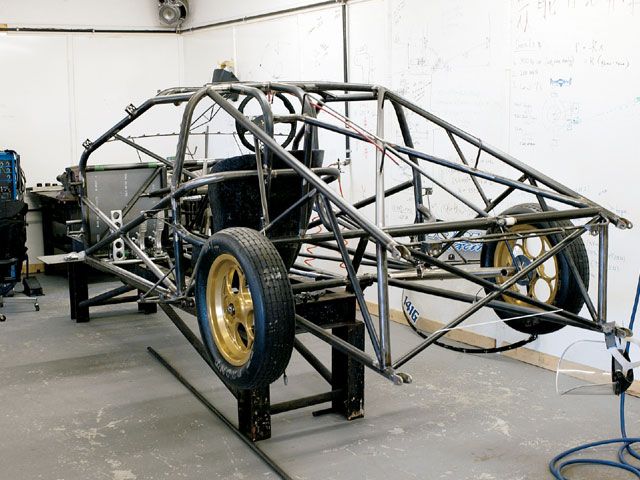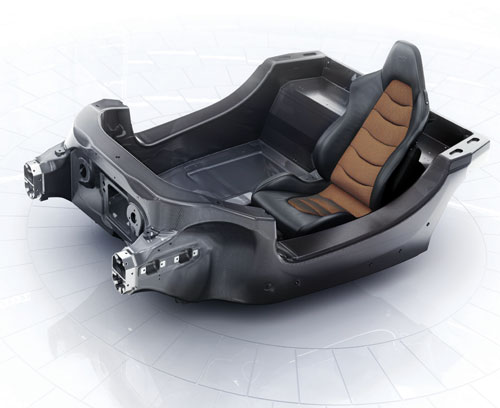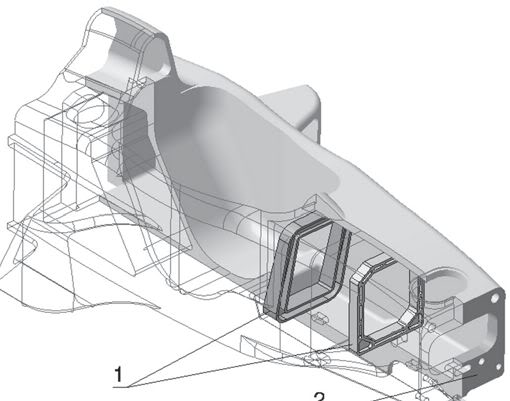I’m getting to a point of critical mass with this project. I’m feeling like it’s truly time to “shit, or get off the pot” as they say. While I have no doubts as to my desire to truly see this project happen, I’ve been distracted of late and have a few lingering things I need to figure out. So I’m throwing those topics out for discussion to keep them moving forward.
Firstly, I need to finalize the broad chassis design when it comes to the safety cell. One of my major design criteria for this vehicle is that the driver be completely protected, much like a race car. Obviously weight is a consideration, but every bit of stiffness gained from driver compartment reinforcement is also stiffness gained for better handling. I feel very finalized in my plans to have front and rear sub frame assemblies that hold the front suspension and engine respectively. These would be tube steel and would bolt onto the safety cell in some manner of catastrophic break-away fashion, regardless of the safety cell’s construction. The question then remains of simply which method of safety cell construction to adopt. Here’s what I’m considering:
Steel tube roll cage — This would be similar to a rock crawler, drag racer, or any number of purpose-built oval track race cars like dirt track or even NASCAR vehicles.
Pros:
- Relatively lightweight at approximately 100-150 lbs.
- Very sturdy.
- Lots of known quantities and standards from organizations like the NHRA.
- Relatively easy to construct and customize.
- Reasonably inexpensive.
- Provides structure for the chassis as well as protection for the driver.
- Very easy to just weld things onto it or cut things off of it.
- The thickness of the safety cell could be less than 2″ , which would help keep everything low-profile.
Cons:
- Very rigid geometry in terms of shape. Complex curves are really hard.
- Requires some extra equipment (welding rig and pipe bender).
- Not as lightweight as some alternatives.
- Provides only stiffness — no energy dispersion.
- Would need to be jig built in order to prevent heat warping.
- Would have to create separate inner cockpit lining and separate outer body shell that would attach inside and outside of the cage.
Composite safety “tub” — This is the kind of safety cell used by may alternative vehicles like the Aptera and is based on F1, Indy, and even high speed race boat designs. It’s also comparable to many of the structural construction techniques used in making high performance small aircraft.
Pros:
- Very lightweight and rigid.
- Can be made in any shape.
- Inner surface can be the cockpit lining and even be contoured to make up the seat.
- Outer surface can literally be the body shell, so no body attachment necessary and weight/complexity savings in unifying the body with the structure.
- Can be constructed with simple tools for shaping foam and then laying the FB or CF cloth.
- In an impact situation, the layers of composites and foam would not only provide protective rigidity but would actually absorb a lot of energy.
Cons:
- Fewer known quantities in terms of rigidity and real-world safety (although that information is probably available through F1 and other sanctioning bodies).
- Could be more difficult to adjust it on the fly if a big change was needed after it was made.
- Need to do a cost analysis, but it might be slightly more expensive (only because steel is actually pretty cheap). Not sure how much that much foam and FG and resin will cost.
- Will be thicker (possibly 4″-6″ inches thick), which could create clearance issues during lean and general bulk
Aluminum and fiberglass monocoque — This is an idea I had yesterday after a brief visit to the EAA Airventure Museum. The idea would be to utilize flat, machined aluminum bulkheads and ribs that interlock at right angles to each other. Then I’d fill the gaps with foam and fiberglass a skin inside and out. Put another way, it’s the F1-style safety cell, but instead of just being solid foam, it’s got aluminum bulkheads and bracing throughout.
Pros:
- Stiffer than the all-composite cell, but likely still lighter than the steel tubing cage.
- Inner structure would add a lot of stiffness, probably surpassing either of the other two designs
- Flat bulkhead designs mean that all the truly structural components could just be water-jet cut and then put together like a kit. It’d be self-aligning and could just be MIG welded at the joints with an aluminum-core wire.
- It would provide solid metal anchor points for things like the seat, harness, and the subframes front and rear.
Cons:
- Heavier than the all-composite cell
- CNC work required to do it right. It wouldn’t be something I could make correctly myself. That means expense both in programming and machine time.
- Might simply be overkill, although over-engineering the safety cell isn’t really a bad thing, now is it?
My favorite option at the moment is the third concept. Perhaps just because it’s the newest idea, but there does seem to be a lot of elegance to the interlocking aluminum bulkheads. I’m looking for input. Give me your thoughts. What have I overlooked? Is there a structural engineer in the house?



I think you shoul considur this method too: http://www.autospeed.com.au/cms/A_110989/article.html
http://www.autospeed.com.au/cms/A_110990/article.html
Of using Aluminium honeycomb sheets together with composit materials, thus making a relatively affordable and lightweight structure. This method would be built the same way as your method 3, but anchor points would have to be added at some point. One major pro to this honeycomb is that you don’t need to waterjet or cut any solid metal parts for the majority of the contruction.
More info on this build here: http://www.unisa.edu.au/solarcar/Trev/
That’s great, Coninsan, thanks for the links. While the panels appear to make great structural material, the design of this particular vehicle doesn’t seem to have much in mind as far as crash-worthiness. But that’s not the material’s fault. Using that material, or something similar in place of the solid aluminum bulkheads and such I was proposing might be just the ticket. I’m encouraged that their two-seat vehicle, batteries and all, still came in under 700 lbs.
UPDATE: I reached out to a mechanical engineer and fellow motorcycle nut with this question and his response was pretty conclusive.
There you have it. The tubular space frame design will be easier to build and easier to get right. While the composite tub would have certainly been interesting, part of my design criteria is to keep things simple — to stick with known quantities and only have to engineer as few things as possible.
So unless somebody out there can make a super compelling case to go another direction, it’s tube steel all the way. Likely something that meets NHRA or SCCA standards.
I haven’t done the research to know if this is possible/sensible/pre-existing, but has anybody thought to put the chairs on rails that slide into a crumple/crush material or some other buffer in the event of a front or rear collision?